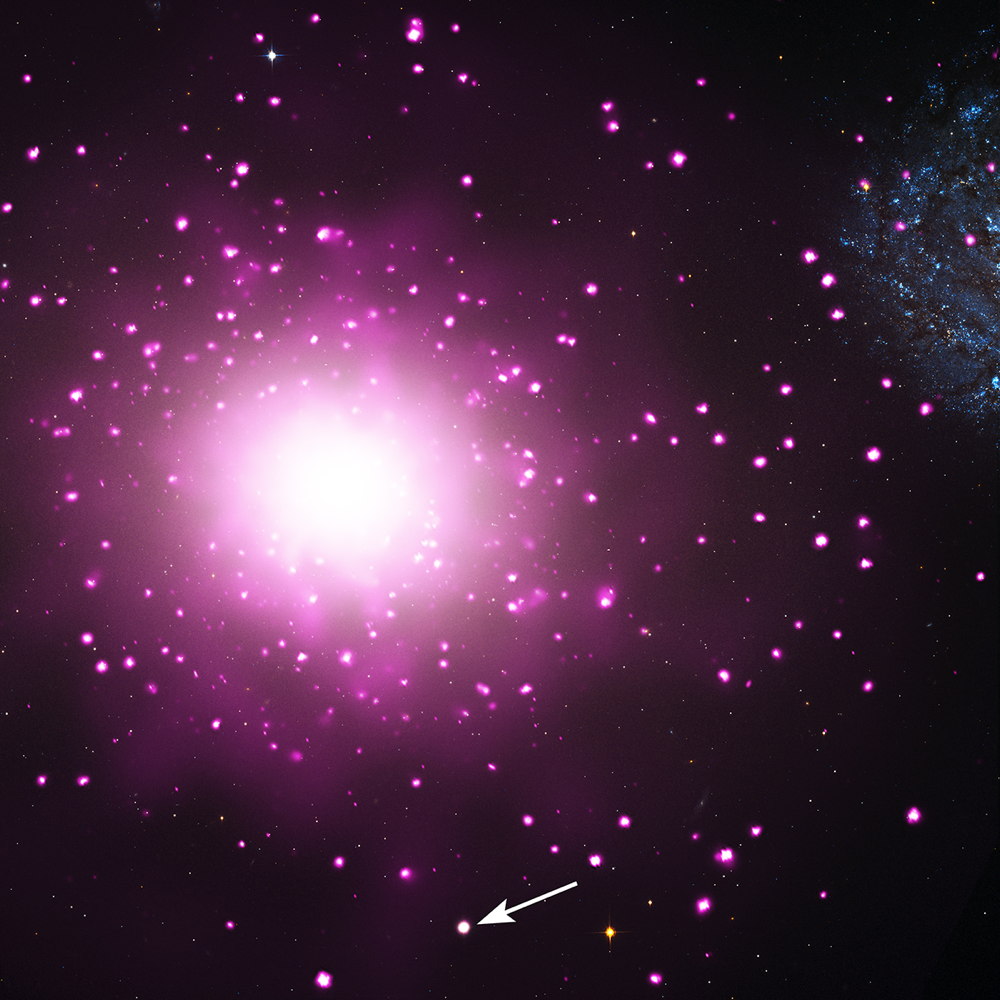NASA Finds Most Crowded Galaxy Ever Seen (Video)

Astronomers using NASA's flagship space telescopes have spotted what appears to be densest nearby galaxy ever seen, with stars packed so tightly that they are likely 25 times closer to each other than the stars in our own Milky Way galaxy.
The super-crowded galaxy is called M60-UCD1 and is located about 54 million light-years away from Earth and the sun. It weighs a whopping 200 million times more than the sun, packing half of this mass within 80 light-years of its center, scientists said. Such crowded conditions make M60-UCD1 a type of ultra-compact dwarf galaxy.
Scientists discovered the galaxy using NASA's Hubble Space Telescope, making follow-up observations using the space agency's Chandra X-ray Observatory and ground-based optical telescopes, such as the Keck Observatory in Hawaii.
Inside the galaxy's heart is a bright source of X-rays that came to light in images from the Chandra X-Ray Observatory. The X-rays may be coming from a giant black hole that's about 10 million times the mass of the sun, astronomers say. And if the X-rays are indeed coming from such a massive black hole, it would mean M60-UCD1 is likely left over from a galaxy that was 50 to 200 times larger.
"Large black holes are not found in star clusters, so if the X-ray source is in fact due to a massive black hole, it was likely produced by collisions between the galaxy and one or more nearby galaxies," a NASA statement read. "The mass of the galaxy and the sun-like abundances of elements also favor the idea that the galaxy is the remnant of a much larger galaxy."
M60-UCD1's growth would have been stunted for billions of years after the collision, astronomers added. In fact, they estimate the dense galaxy has been around for more than 10 billion years.
The research is detailed in the Sept. 20 edition of Astrophysical Journal Letters.
Breaking space news, the latest updates on rocket launches, skywatching events and more!
Follow Elizabeth Howell @howellspace. Follow us @Spacedotcom, Facebook and Google+. Original article on SPACE.com.

Elizabeth Howell (she/her), Ph.D., was a staff writer in the spaceflight channel between 2022 and 2024 specializing in Canadian space news. She was contributing writer for Space.com for 10 years from 2012 to 2024. Elizabeth's reporting includes multiple exclusives with the White House, leading world coverage about a lost-and-found space tomato on the International Space Station, witnessing five human spaceflight launches on two continents, flying parabolic, working inside a spacesuit, and participating in a simulated Mars mission. Her latest book, "Why Am I Taller?" (ECW Press, 2022) is co-written with astronaut Dave Williams.

